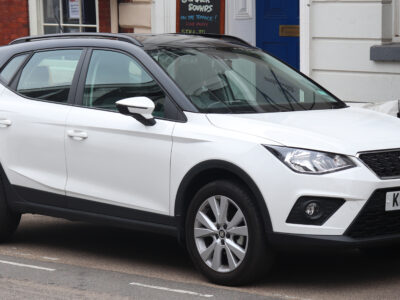
Ford Puma Clicking Noise and Won’t Start – Complete Troubleshooting Guide
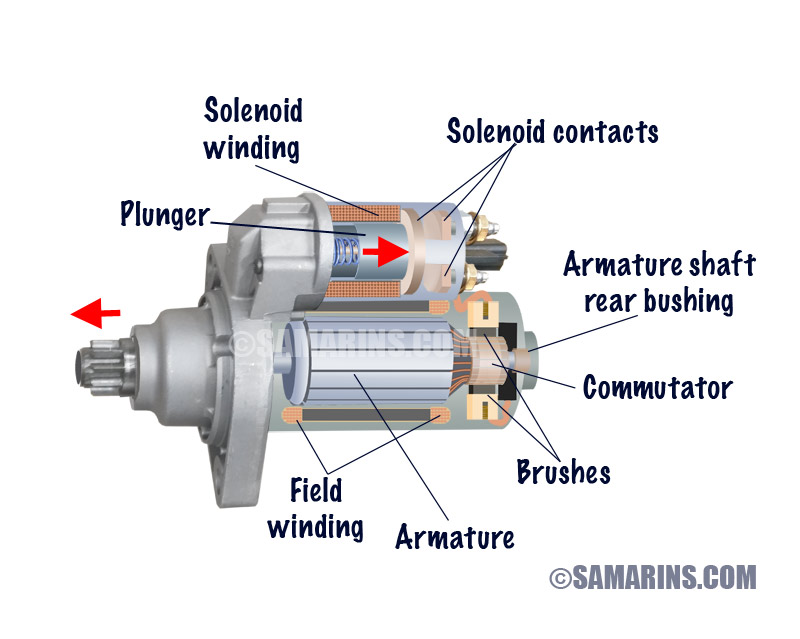
When your Ford Puma won’t start and only makes a clicking noise, it’s more than a minor inconvenience—it’s a signal that your vehicle’s electrical or starting system needs attention. In this detailed guide, we’ll cover every possible cause, step-by-step diagnostics, and practical solutions to help you get back on the road safely and quickly.
- Quick Overview of Common Causes
- 1. Depleted or Weak Battery
- 2. Jump Starting the Ford Puma
- 3. Loose or Corroded Battery Terminals
- 4. Bad Connection to the Starter Motor
- 5. Faulty Starter Motor
- 6. Poor Ground Connection
- 7. Alternator Malfunction
- 8. Engine Seizure (Rare but Serious)
- 9. Preventive Maintenance Tips
- Conclusion
Quick Overview of Common Causes
| Cause | Sound | Likely Problem |
|---|---|---|
| Weak or Dead Battery | Rapid clicking | Insufficient charge or alternator failure |
| Corroded Battery Terminals | Rapid clicking | Poor electrical contact |
| Faulty Starter Motor | Single loud click | Mechanical or electrical failure |
| Loose Ground Connection | Inconsistent clicking | Poor grounding or rusted connectors |
| Bad Alternator | Slow or repeated clicks | Battery not recharging properly |
| Seized Engine | Single click, no crank | Mechanical lock-up |
1. Depleted or Weak Battery
A weak battery is the most frequent reason behind the clicking sound and failure to start.
Signs of a Dead Battery
- Dashboard lights flicker or dim when turning the key.
- Rapid clicking noise from the engine bay.
- No crank despite functioning interior lights or radio.
Battery Voltage Test
Use a multimeter to check your battery:
- Fully charged: 12.6V or above
- Weak: 12.3V or below
- Needs replacement: Below 12.0V
If voltage drops below 10V during cranking, the battery lacks sufficient charge.
Causes of Battery Failure
- Old age (3–5 years typical lifespan).
- Alternator not charging the battery.
- Parasitic drain from lights or electronics.
- Cold weather reducing battery efficiency.
2. Jump Starting the Ford Puma
If the battery is flat, a jump start can bring your Puma back to life temporarily.
Required Tools
- Jumper cables
- Donor vehicle with a healthy battery or a battery booster
Step-by-Step Jump Start Procedure
- Turn off both vehicles and set transmissions to Park (automatic) or Neutral (manual).
- Connect red cable to the positive terminal of the dead battery.
- Attach the other red end to the positive terminal of the donor battery.
- Connect black cable to the negative terminal of the donor battery.
- Clamp the other black end to a bare metal surface on your Puma (not the battery).
- Start the donor vehicle, wait 30–60 seconds, then start the Puma.
- Once running, remove the cables in reverse order.
⚠️ Caution: Avoid jump-starting while the donor engine is running—it can damage alternators.
If your Puma starts successfully, the battery is likely weak or the alternator isn’t charging.
3. Loose or Corroded Battery Terminals
Even with a good battery, poor terminal contact can prevent proper electrical flow.
You may be interested in reading Common Ford Puma Problems and How to Fix Them
Common Ford Puma Problems and How to Fix ThemHow to Inspect and Clean Battery Terminals
Tools Needed
- Wrench
- Wire brush or sandpaper
- Gloves and eye protection
Steps
- Remove the negative (-) cable first.
- Then remove the positive (+) cable.
- Clean corrosion using a wire brush or battery cleaner.
- Reattach the positive terminal first, then the negative.
- Tighten connections firmly to ensure solid contact.
If your Puma starts after cleaning, let it run for 15–20 minutes to recharge the battery.
4. Bad Connection to the Starter Motor
A faulty starter connection can cause a single loud click when turning the key.
Diagnosis
- One loud click = power reaches the solenoid but the motor doesn’t spin.
- Multiple rapid clicks = low voltage or corroded terminals.
Temporary Fix
Tap the starter motor lightly with a hammer while a helper turns the key.
If the car starts, the starter motor is failing and must be replaced soon.
Starter Lifespan
Typically 30,000–200,000 miles, depending on usage, maintenance, and climate.
5. Faulty Starter Motor
Once the battery and terminals are confirmed good, the next likely cause is a bad starter motor.
Symptoms
- Loud single clunk or dull click from the engine area.
- Lights stay bright, but the engine doesn’t crank.
- Occasional success after tapping the starter.
Solution
- Test the starter solenoid and motor using a multimeter.
- If defective, replace the starter motor immediately.
- Check for oil leaks or moisture near the starter that may have caused corrosion.
6. Poor Ground Connection
Understanding Grounding
The ground wire connects the negative battery terminal to the vehicle’s chassis and engine block.
If this connection is loose or corroded, electrical flow becomes inconsistent, resulting in clicking without cranking.
Testing the Ground
- Use a multimeter (Ω setting).
- Touch one probe to the battery’s negative terminal and the other to an exposed metal area on the engine.
- A reading close to 0 ohms means good continuity.
- High resistance indicates poor grounding.
Fix
- Clean or replace ground straps using sandpaper or a wire brush.
- Tighten all bolts securely.
7. Alternator Malfunction
Even if your battery is new, a bad alternator won’t keep it charged.
Warning Signs
- Battery warning light illuminated on the dashboard.
- Dim headlights while idling.
- Electrical accessories behaving erratically.
Testing
- Use a multimeter while the engine is running; voltage should read 13.5–14.5V.
- Anything below 13V indicates alternator failure.
If confirmed, replace or rebuild the alternator to restore proper charging.
You may be interested in reading Common Ford Puma Problems and How to Fix Them
Common Ford Puma Problems and How to Fix Them Ford Puma Automatic Transmission Problems: Common Issues, Causes, and Fixes
Ford Puma Automatic Transmission Problems: Common Issues, Causes, and Fixes8. Engine Seizure (Rare but Serious)
In severe cases, a seized engine can mimic a dead battery with a single loud click and no crank.
Causes
- Lack of engine oil
- Overheating
- Internal mechanical damage
- Water intrusion (hydrolock)
Signs
- Loud bang before failure
- Engine won’t turn over even with a strong battery
- Burning smell or oil leakage
If suspected, do not force the ignition—call a certified mechanic immediately.
9. Preventive Maintenance Tips
- Replace your battery every 4 years or sooner if weak.
- Inspect and clean terminals every 6 months.
- Avoid short, frequent trips that prevent full battery charging.
- Keep jumper cables or a portable jump starter in your trunk.
- Schedule a charging system test yearly at your Ford service center.
Conclusion
A clicking sound with no engine start in your Ford Puma typically indicates a battery, starter, or electrical grounding issue. Prompt inspection and maintenance can prevent costly breakdowns and ensure your vehicle’s reliability.
If basic troubleshooting doesn’t solve the issue, it’s best to have a professional mechanic diagnose the starter circuit, alternator, or engine health to avoid further complications.
Frequently Asked Questions
1. Why does my Ford Puma click but not start even with a new battery?
→ Likely a bad starter motor, corroded ground, or faulty relay.
2. Can I jump-start my Puma if it’s hybrid or mild-hybrid?
→ Yes, but only following manufacturer guidelines to avoid damaging sensitive electronics.
3. How long should I let the car run after a jump start?
→ At least 20–30 minutes to recharge the battery sufficiently.
4. Why does the clicking sound get faster when I try to start the car repeatedly?
→ The battery voltage drops further with each attempt, weakening the solenoid’s response.
 Common Ford Puma Problems and How to Fix Them
Common Ford Puma Problems and How to Fix Them Ford Puma Automatic Transmission Problems: Common Issues, Causes, and Fixes
Ford Puma Automatic Transmission Problems: Common Issues, Causes, and Fixes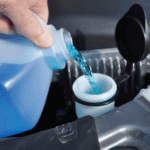 Ford Puma Windshield Washer Not Working — Complete Fix Guide
Ford Puma Windshield Washer Not Working — Complete Fix Guide5. How can I tell if my alternator is bad or just the battery?
→ If the car starts but stalls shortly after, it’s usually the alternator that’s failing.
If you want to know other articles similar to Ford Puma Clicking Noise and Won’t Start – Complete Troubleshooting Guide you can visit the category Common Problems.
Deja una respuesta

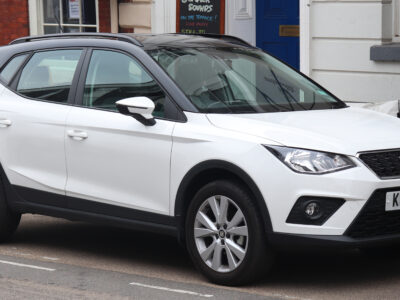
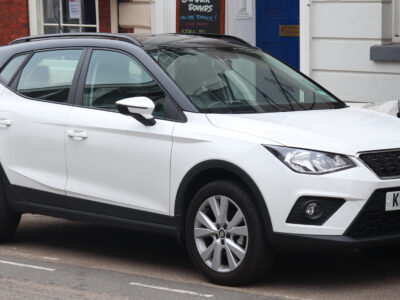
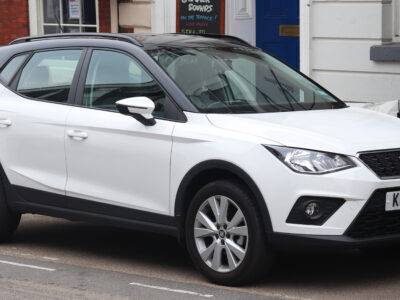


More content of your interest